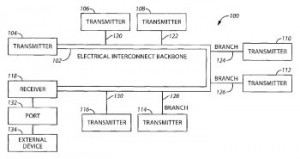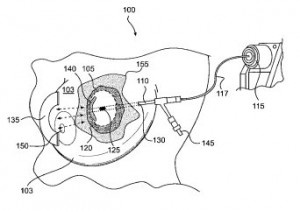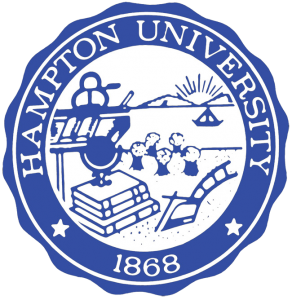 There are 105 collegiate institutions in the United States which are recognized by the federal government as historically black colleges and universities (HBCUs). About 10 percent of the black college student population in America attends HBCUs but those institutions graduate about 20 percent of black undergraduates.
There are 105 collegiate institutions in the United States which are recognized by the federal government as historically black colleges and universities (HBCUs). About 10 percent of the black college student population in America attends HBCUs but those institutions graduate about 20 percent of black undergraduates.
Before 1970, no HBCU-affiliated inventor had been assigned a patent, but science and engineering activities at these organizations have grown over time. Last year, we profiled a collection of HBCU inventions reflected in patents and patent applications filed with the U.S. Patent and Trademark Office. With February drawing to a close, the confluence of both Black History Month and the annual Association of University Technology Managers meeting makes now a good time to revisit the recent innovations of these institutions.
In recent years HBCUs have struggled financially, which has been exacerbated in most cases by declining enrollment. Changes to educational funding programs, such as the reduction of semesters for which students can qualify for Pell Grants, have contributed to the lower number of students as fewer applicants from poor socio-economic backgrounds can afford to attend. Dr. William Harvey, president of Hampton University and chairman of the President’s Board of Advisors on HBCUs, made recent remarks suggesting that the HBCU community should have a greater level of involvement in President Obama’s actions on tuition-free community college programs.
Investment in research and development by HBCUs from the National Science Foundation was $547 million in 2011, an increase of 16 percent from the previous year. In June of last year, U.S. Senate Appropriations Committee chairwoman Barbara Mikulski (D-MD) called on the NSF to increase its financial support of HBCU institutions. And the White House has recognized the importance of HBCUs in educating in the technical field, saying pointing out that “[e]ven though our nation’s HBCUs make up just 3 percent of colleges and universities, they produce 27 percent of African American students with bachelor’s degrees in STEM fields.”
Although no single institution among this network of schools has a tremendous patent output, at least compared to some of the other universities we’ve profiled recently, there were a number of intriguing technologies that should interest our readers. Ranging from innovations to treat various forms of cancer, to AIDS treatments and medical nanotechnology, HBCUs contribute to the innovation in important ways.
[Bio-Pharma]
Treating Stroke, Cancer and AIDS at Morehouse School of Medicine
Formerly a part of Morehouse College, the Morehouse School of Medicine of Atlanta, GA, was made independent of that institution in 1981. The college receives funding from agencies such as the National Institutes of Health and the Health Resources and Services Administration to fund research activities into cardiovascular health, primary care, neuroscience and more.
Research and development of cancer treatments seemed to be a particularly strong focus area for Morehouse School of Medicine. A pharmaceutical composition designed to modulate receptors within a cancer patient which play an important role in the progression of cancers is disclosed and protected by U.S. Patent No. 8796422, which is titled Chemokine-Immunoglobulin Fusion Polypeptides, Compositions, Method of Making and Use Thereof. The patent, issued in August 2014, claims a chemokine-immunoglobulin fusion polypeptide that contains a moiety of the monocyte chemotactic protein CCL2 and an immunoglobulin moiety comprising a constant region of a human immunoglobulin. The innovation results in an improved chemokine receptor modulator to provide anti-tumor and anti-inflammatory benefits without interfering with certain chemokine expression that leads to wound healing and other regenerative processes. A microparticle release inhibitor that has the potential to treat cancers and viral diseases is discussed within U.S. Patent No. 8871708, entitled Composi tions and Methods for Treating AIDS or Cancer By Inhibiting the Secretion of Microparticles. Issued last October, the patent protects a peptide for inhibiting the release of microparticles in a cell, the peptide having an N-terminal, a C-terminal and a specific sequence of amino acids. This pharmaceutical innovation results in a treatment that inhibits the release of vesicles and other microparticles from cells affected by cancer or HIV which can distort the immune system’s response to those diseases.
tions and Methods for Treating AIDS or Cancer By Inhibiting the Secretion of Microparticles. Issued last October, the patent protects a peptide for inhibiting the release of microparticles in a cell, the peptide having an N-terminal, a C-terminal and a specific sequence of amino acids. This pharmaceutical innovation results in a treatment that inhibits the release of vesicles and other microparticles from cells affected by cancer or HIV which can distort the immune system’s response to those diseases.
The use of cell signaling proteins known as neuregulins to enhance stem cell therapies for treating a stroke patient is at the center of U.S. Patent No. 8785369, titled Neuregulins for Prevention and Treatment of Damage from Acute Assault on Vascular and Neuronal Tissue and as Regulators of Neuronal Stem Cell Migration. The patent, issued July 2014, claims a method of ameliorating occlusive stroke damage in a patient by increasing migration of neural stem cells to damaged areas of the brain by administering an amount of neuregulin-1 to a patient who has suffered an occlusive stroke within a period of 13.5 hours to 72 hours after the onset of stroke. The neuregulin provides anti-inflammatory benefits that optimize the ability of stem cells to reach the brain of a stroke victim. The neurological health of malaria patients is the focus of U.S. Patent No. 8846048, which is titled Compositions and Methods for Diagnosis, Prognosis and Management of Malaria. The method for treating cerebral malaria in a human subject claimed by this patent involves administering an effective amount of an agent that modulates the expression or activity of a malaria biomarker in the subject; this agent is administered concurrent with conventional malaria treatments. This treatment targets the neurological complications caused by certain cases of malaria and does a better job of predicting the severity of those neurological complications which can sometime lead to mortality in patients.
Medical Nanotech and Electrical System Safety at Howard University
Howard University is located in Washington, DC, and is a leading STEM research institution among HBCUs in America. Medical research, specifically innovations involving nano-sized bioparticles, were featured in a pair of patents issued to this institution in recent months. In July 2014, the university was issued U.S. Patent No. 8772355, which is titled Stealth Polymeric Particles for Delivery of Bioactive or Diagnostic Agents. The patent claims a blend of polymeric particles including a polymer made up of a free radical dispersion polymerization product of polyalkylene glycol and and an acrylate. This composition includes nanospheres which are capable of a more controlled delivery of pharmaceutical treatments for better targeting and temporal control, increasing the beneficial aspects of medication while reducing side effects. Similar goals are achieved by the technology expressed within U.S. Patent No. 8921429, titled Biodegradable Stealth Polymeric Particles Fabricated Using the Macromonomer Approach By Free Radical Dispersion Polymerization. This patent, issued at the end of December, protects a polymer particle made up of polylactic acid that has been functionalized with a double bond and a free radical polymerization product of polyalkylene glycol that has been functionalized by an acrylate. This invention results in the production of biodegradable polymers to be used for drug delivery systems like the one outlined in the previous Howard University patent.
 A technique of transmitting signals across an electrical system to determine unexpected and intermittent faults within the system is described by U.S. Patent No. 8897635, which is titled System and Method of Detecting and Locating Intermittent and Other Faults. The patent, issued last November, claims a method for detecting intermittent electrical faults in a network by conducting two signals onto an electrical network separate transmitters via separate magnetic couplings, receiving selected signals at a receiver module using a third magnetic coupling and analyzing the signals to determine whether an intermittent fault has occurred in one of the segments of the transmission medium of the electrical network. This innovation is more cost-effective and flexible than conventional fault discovery methods and does not use intrusive equipment that could create an electrical fault itself, increasing the risk of electrical fires or other safety concerns.
A technique of transmitting signals across an electrical system to determine unexpected and intermittent faults within the system is described by U.S. Patent No. 8897635, which is titled System and Method of Detecting and Locating Intermittent and Other Faults. The patent, issued last November, claims a method for detecting intermittent electrical faults in a network by conducting two signals onto an electrical network separate transmitters via separate magnetic couplings, receiving selected signals at a receiver module using a third magnetic coupling and analyzing the signals to determine whether an intermittent fault has occurred in one of the segments of the transmission medium of the electrical network. This innovation is more cost-effective and flexible than conventional fault discovery methods and does not use intrusive equipment that could create an electrical fault itself, increasing the risk of electrical fires or other safety concerns.
More effective resource management in mobile electronic devices for caching applications currently in use is another Howard University innovation, reflected by U.S. Patent No. 8751743, which is titled Apparatus and Method for Context-Aware Mobile Data Management and was issued in June 2014. It claims a method to efficiently cache and replicate application data in a context-aware system by determining a context of a mobile device and a context preference of a device user, transmitting both the context and context preference to a server, receiving private and shared data updates from the mobile device user and setting up a number of transmission queues for caching data. The resulting caching algorithm is more power efficient and is advantageous for updating data in applications which are not updated often, such as spot guides or mobile blogs.
Hampton University Develops Tools to Fight Breast Cancer
Hampton University of Hampton, VA, is one of the HBCUs heavily invested in health, physics and engineering research. The institution supports many research centers focused on atmospheric sciences, behavioral sciences and proton therapies. The latter of these is part of the technology which is protected through the issue of U.S. Patent No. 8829476, which is titled Hadron Treatment Planning With Adequate Biological Weighting, issued to the school in early September. The patent discloses an apparatus for delivering a biological dose at a treatment site of a patient, the apparatus having a linear energy transfer (LET) determination module and a relative biological effectiveness (RBE) determination module, both of which receive tissue-specific parameters that describe a site under treatment to determine the variability of RBE along a plurality of hadron beams. The innovation provides a means for planning treatment of tumors by utilizing proton radiotherapy in such a way that doctors can be sure of which proton beam intensity should be applied to achieve a desired biological dose at an affected site.
 Tools and treatments to aid in the fight against breast cancer were reflected in a pair of patents assigned to Hampton University that we noticed during our survey. U.S. Patent No. 8734313, entitled Accelerated Partial Breast Irradiation With Shielded Brachytherapy Applicator System and Method of Use, was issued in May 2014 to protect a method of brachytherapy that involves determining whether a radiation shield is necessary based in part on the distance of a radiation source to the surface layer of a subject, creating a radiation shield by applying a magnetic field to attract shielding material and applying a radiation dose which is deliverable to one area of a subject and partially blocked by the radiation shield. This improved radiation therapy technique supports the use of shielded intracavitary brachytherapy which involves the implantation of a balloon containing a radioactive seed into a cavity remaining after tumor removal to discourage the reappearance of cancerous tissues. Finally today, we also wanted to share with our readers an invention in the field of enhanced mammography procedures for breast imaging which is protected by U.S. Patent No. 8855748, titled Opposed View and Dual Head Detector Apparatus for Diagnosis and Biopsy With Image Processing Methods. Issued in October 2014, this patent claims a method for controlling a device for determining a lesion location with a patient target site by controlling the movement of a photon imaging device to acquire a plurality of images relative to the target site, receiving images and the signal intensity for each image and determining the lesion location using a single pair of signal intensities obtained simultaneously from opposing positions. This invention enables the use of scintimammography techniques for detecting breast lesions at a diameter of less than one centimeter by fusing gamma and x-ray images into a single image.
Tools and treatments to aid in the fight against breast cancer were reflected in a pair of patents assigned to Hampton University that we noticed during our survey. U.S. Patent No. 8734313, entitled Accelerated Partial Breast Irradiation With Shielded Brachytherapy Applicator System and Method of Use, was issued in May 2014 to protect a method of brachytherapy that involves determining whether a radiation shield is necessary based in part on the distance of a radiation source to the surface layer of a subject, creating a radiation shield by applying a magnetic field to attract shielding material and applying a radiation dose which is deliverable to one area of a subject and partially blocked by the radiation shield. This improved radiation therapy technique supports the use of shielded intracavitary brachytherapy which involves the implantation of a balloon containing a radioactive seed into a cavity remaining after tumor removal to discourage the reappearance of cancerous tissues. Finally today, we also wanted to share with our readers an invention in the field of enhanced mammography procedures for breast imaging which is protected by U.S. Patent No. 8855748, titled Opposed View and Dual Head Detector Apparatus for Diagnosis and Biopsy With Image Processing Methods. Issued in October 2014, this patent claims a method for controlling a device for determining a lesion location with a patient target site by controlling the movement of a photon imaging device to acquire a plurality of images relative to the target site, receiving images and the signal intensity for each image and determining the lesion location using a single pair of signal intensities obtained simultaneously from opposing positions. This invention enables the use of scintimammography techniques for detecting breast lesions at a diameter of less than one centimeter by fusing gamma and x-ray images into a single image.

![[IPWatchdog Logo]](https://ipwatchdog.com/wp-content/themes/IPWatchdog%20-%202023/assets/images/temp/logo-small@2x.png)



![[Advertisement]](https://ipwatchdog.com/wp-content/uploads/2024/04/Patent-Litigation-Masters-2024-sidebar-early-bird-ends-Apr-21-last-chance-700x500-1.jpg)

![[Advertisement]](https://ipwatchdog.com/wp-content/uploads/2021/12/WEBINAR-336-x-280-px.png)
![[Advertisement]](https://ipwatchdog.com/wp-content/uploads/2021/12/2021-Patent-Practice-on-Demand-recorded-Feb-2021-336-x-280.jpg)
![[Advertisement]](https://ipwatchdog.com/wp-content/uploads/2021/12/Ad-4-The-Invent-Patent-System™.png)







Join the Discussion
No comments yet.